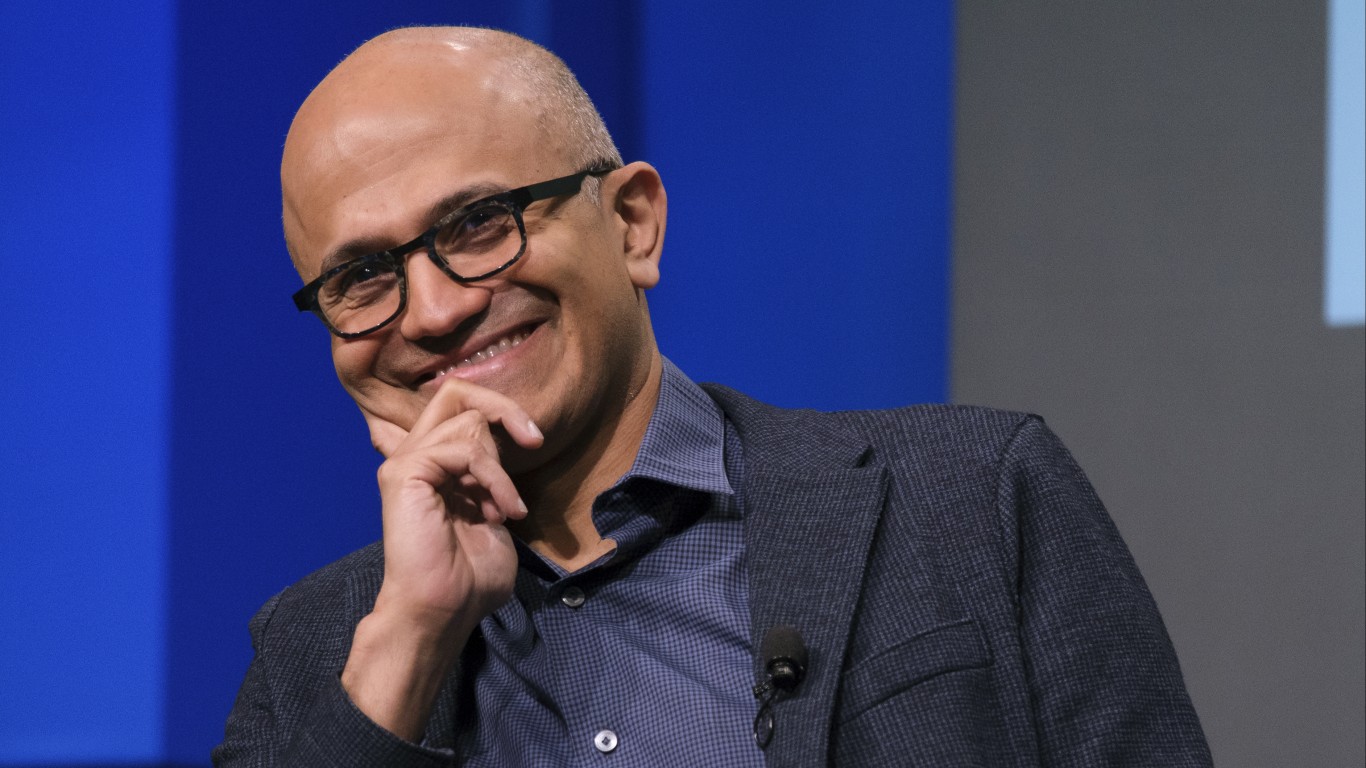
Dividend growth stocks are a fantastic choice for investors who want to build wealth steadily over time. These companies pay a regular dividend and increase it year after year, helping your income grow without you lifting a finger.
This can be a lifesaver as protection against inflation. As prices rise, your payouts rise too. Plus, dividend growth stocks often signal a strong, reliable business with the cash to reward shareholders, making them less risky than stocks that don’t pay dividends. Over time, reinvesting those growing dividends can turbocharge your returns through compounding, turning a small investment into a big nest egg.
24/7 Wall St. Insights:
-
Dividend growth stocks offer the opportunity to build wealth over time while protecting against inflation and market downturns.
-
Dividend Aristocrats are stocks on the S&P 500 that have raised their dividends for 25 years or more.
-
Look for these two stocks to eventually join their ranks as they have compiled an impressive track record of success, including recently hitting a new 52-week high.
-
If you’re looking for some stocks with huge potential, make sure to grab a free copy of our brand-new “The Next NVIDIA” report. It features a software stock we’re confident has 10X potential.
According to data from Hartford Funds and Ned Davis Research, stocks that initiated a dividend and then grew their payouts have beaten all other stocks. Over the 50-year period between 1973 and 2023, dividend growers returned 10.2% annually compared to 4.3% for those that did not pay a dividend.
Below are two stocks that are sure to eventually become Dividend Aristocrats, or stocks on the S&P 500 that have increased their dividends for 25 years or more.
Starbucks (SBUX)

Coffee shop giant Starbucks (NASDAQ:SBUX) just hit a 52-week high of $114.49, reflecting its strong momentum. The stock has been climbing even though first-quarter earnings weren’t as robust as its coffee. While sales of $9.4 billion were flat, they beat analyst expectations. Similarly, earnings of $0.69 per share were ahead of analyst expectations of $0.67 per share. With 40,000 locations worldwide, it oversees a vast and growing empire and it has a new CEO determined to return the java slinger into its former growth juggernaut.
Starbucks has raised its dividend for 14 years straight, with a 10-year compound annual growth rate (CAGR) of more than 15%. Its current dividend yield is 2.1%, paying $2.44 per share annually, and with a free cash flow payout ratio of 66%, there’s room to keep growing.
The coffee chain isn’t a Dividend Aristocrat yet — it needs 11 more years — and it has stumbled several times along the way in the past, but its global brand and focus on innovation make it a strong contender.
Buying Starbucks means betting on a company that’s expanding internationally while keeping customers loyal with rewards programs. Admittedly, its China business is under pressure from a slowing economy, and keep an eye out for its high debt. Competition from cheaper, faster-growing rivals like Dutch Bros (NASDAQ:BROS), could also impact growth if the economy tightens, but SBUX stock is a solid choice.
Starbucks remains the industry leader and a pioneer in mobile and digital marketing that will add value and income to your portfolio.
Visa (V)

Global payment processing powerhouse Visa (NYSE:V) also reached a 52-week high, trading at $355.74. This comes after a stellar first-quarter earnings report, with $9.5 billion in revenue, up 10% year-over-year, and payment volume growth of 9%, driven by e-commerce and travel spending.
Visa has increased its dividend for 16 years in a row, with a 10-year growth rate of nearly 19%. Its current yield of 0.7% may seem miserly, you are enjoying tremendous growth. The annual dividend was just $0.35 per share 10 years ago, but Visa steadily grew the payout, and it now stands at $2.36 per share annually.
Moreover, with an FCF payout ratio of just 19%, Visa has plenty of cash to keep boosting dividends. It’s nine years shy of Dividend Aristocrat status, but its global reach, processing over 200 billion transactions yearly, and low debt make it a near-lock to get there.
Visa’s a great portfolio addition because it benefits from every swipe consumers make with their credit and debit card, earning fees without the risk of lending money like banks do. However, risks like regulatory crackdowns on fees or a global spending slowdown could dent profits, so keep an eye on economic trends.
Yet with exposure to the unstoppable shift to digital payments — even in emerging markets, there is a move toward eliminating cash — Visa is a sure-fire, long-term winner for your portfolio.
Get Ready To Retire (Sponsored)
Start by taking a quick retirement quiz from SmartAsset that will match you with up to 3 financial advisors that serve your area and beyond in 5 minutes, or less.
Each advisor has been vetted by SmartAsset and is held to a fiduciary standard to act in your best interests.
Here’s how it works:
1. Answer SmartAsset advisor match quiz
2. Review your pre-screened matches at your leisure. Check out the advisors’ profiles.
3. Speak with advisors at no cost to you. Have an introductory call on the phone or introduction in person and choose whom to work with in the future
Thank you for reading! Have some feedback for us?
Contact the 24/7 Wall St. editorial team.





